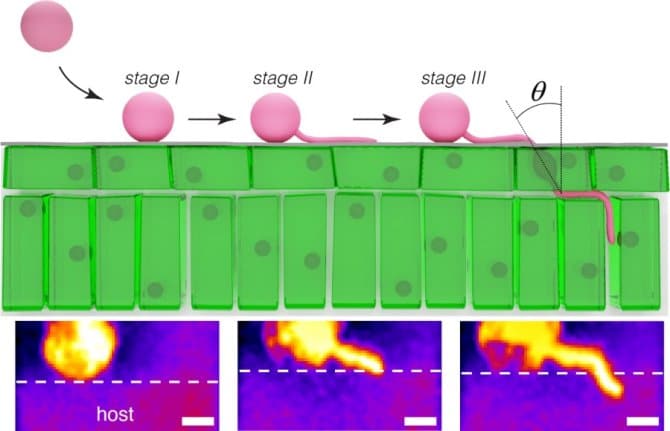Researchers have discovered the potato blight pathogen uses a “sharp knife” to cut into potato plants and infect them, a July 2 news release from Wageningen University & Research (WUR) says.
Experts in plant pathology, cell biology and physics at WUR teamed up to research how the late blight pathogen, Phytophthora infestans, gains entry to potato plants and then infects them, the release says. Despite being microscopically small the pathogen has been able to get through plant’s protective layers.
“We discovered that Phytophthora uses clever tricks to sharpen its tubular infection structure to then cut through the surface of the plant with a sharp knife. Using this strategy, Phytophthora is able to infect its host, without brute force and with minimal consumption of energy,” Joris Sprakel, a WUR professor in physical chemistry and soft matter, says in the release.
To protect plants against this infection researchers are testing options which are non-chemical and not using plant breeding. In one test the research team sprayed the leaves of potato plants with a non-toxic and inexpensive substance which removed the leaf’s stickiness, the release notes. It resulted in a reduction of around 65 per cent in the level of infection — it even rose towards 100 per cent in an optimized trial on artificial surfaces.
The research also showed a new methodology for testing — a kind of rapid testing method which can reveal the effect and efficiency of pesticides in a rapid, accurate and inexpensive way, the report says. These novel tools could also make significant contributions to the ongoing battle against plant diseases.
Their findings were published in Nature Microbiology.
Related Articles
Irish Potato Famine Late Blight Strain Found on Six Continents
U.S. Researchers Discover Wild Potato Genes for Late Blight Resistance











